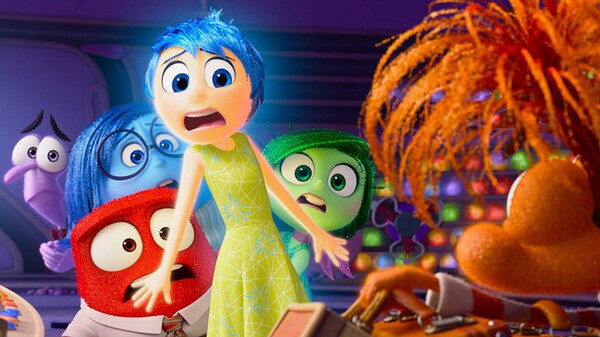Red (Turning Red): an animated film about the relationship between mother and teenage daughter
From the very first scenes of Red (Turning Red) it is apparent that there is an exquisitely feminine sensibility behind the film’s plot, and in fact, this is the first Pixar work directed by a woman. The director of the film, released in 2022 (and now viewable on the Disney+ platform) is, in fact, Domee Shi, an American of Chinese-Canadian descent.
Shi has previously collaborated as a screenwriter on several animated films (Inside Out, The Incredibles 2, Toy Story 4).
Red: a story of adolescence and growing up
At the heart of the story are typical adolescent issues seen from the perspective of a 13-year-old girl, with a special focus on the relationship with parents at that delicate stage of life when a girl becomes an adolescent.
The protagonist is, in fact, Mei Lee; she is about thirteen years old and lives in Canada with her family. Studious and diligent, she loves spending time with her best friends and, like most of her peers, has a musical band of the heart, consisting of five musicians: the 4*Town.
Mei’s life flows rather smoothly, she can enjoy the carefree attitude typical of her age, mainly thanks to friendship, which is shown here with its most beautiful traits (complicity, trust, acceptance, sincerity, affection).
However, there are situations that disturb the protagonist.
First and foremost, she finds herself experiencing many changes all at once: physical changes, changes in the area of feelings, and changes in family relationships.
Mei often feels literally overwhelmed by a whirlwind of emotions that she struggles to manage, to the point that in moments of great anxiety, anger, or agitation she transforms – wherever she is – into a giant red panda.
Her parents are not particularly surprised by this event: in fact, the father Jin and mother Ming know that it is a kind of stigma that has affected their family for generations.
Beyond the narrative device, however, the transformation is undoubtedly a metaphor: it stands to symbolize the outbursts, bouts of crying, and out-of-control screaming that teenagers throw out in their worst moments, often triggered by seemingly unimportant factors, at least from the point of view of the adult, who considers “other” problems “real.”
The mother-daughter relationship during adolescence
Giving rise to this transformation in Mei is, above all, her mother, by whom she feels little understood.
The mother-daughter relationship is known to become very complicated in adolescence. And Mei’s family is no exception in this.
Since childhood, our protagonist has always been good and obedient to parents, but now something is changing, especially in her relationship with her mother, whom Mei perceives as rigid, unsympathetic, intrusive, and inappropriate.
In order for this transformation, which challenges the life of the whole family, to cease, Mei and her mother will have to take a step toward each other, to find each other in a new way.
Just as it is not good for Mei to isolate herself, to tell lies, to avoid confrontation with her mother, neither is it good for her mother to control and command her like a child, or, worse, like a puppet, refusing to allow her freedom of thought and choice.
Red: What does this film leave us with?
The film lays bare many difficulties that both kids and parents face at certain crucial stages of a child’s growth and shows how, in order to regain serenity, we all need to question ourselves, even if it means taking some painful steps backward.
A story that is recommended for children in the age of preadolescence and adolescence, to reflect on their moods and how to handle them, but also for parents, to understand how to relate to them, remaining present, but never living in their children’s place.















